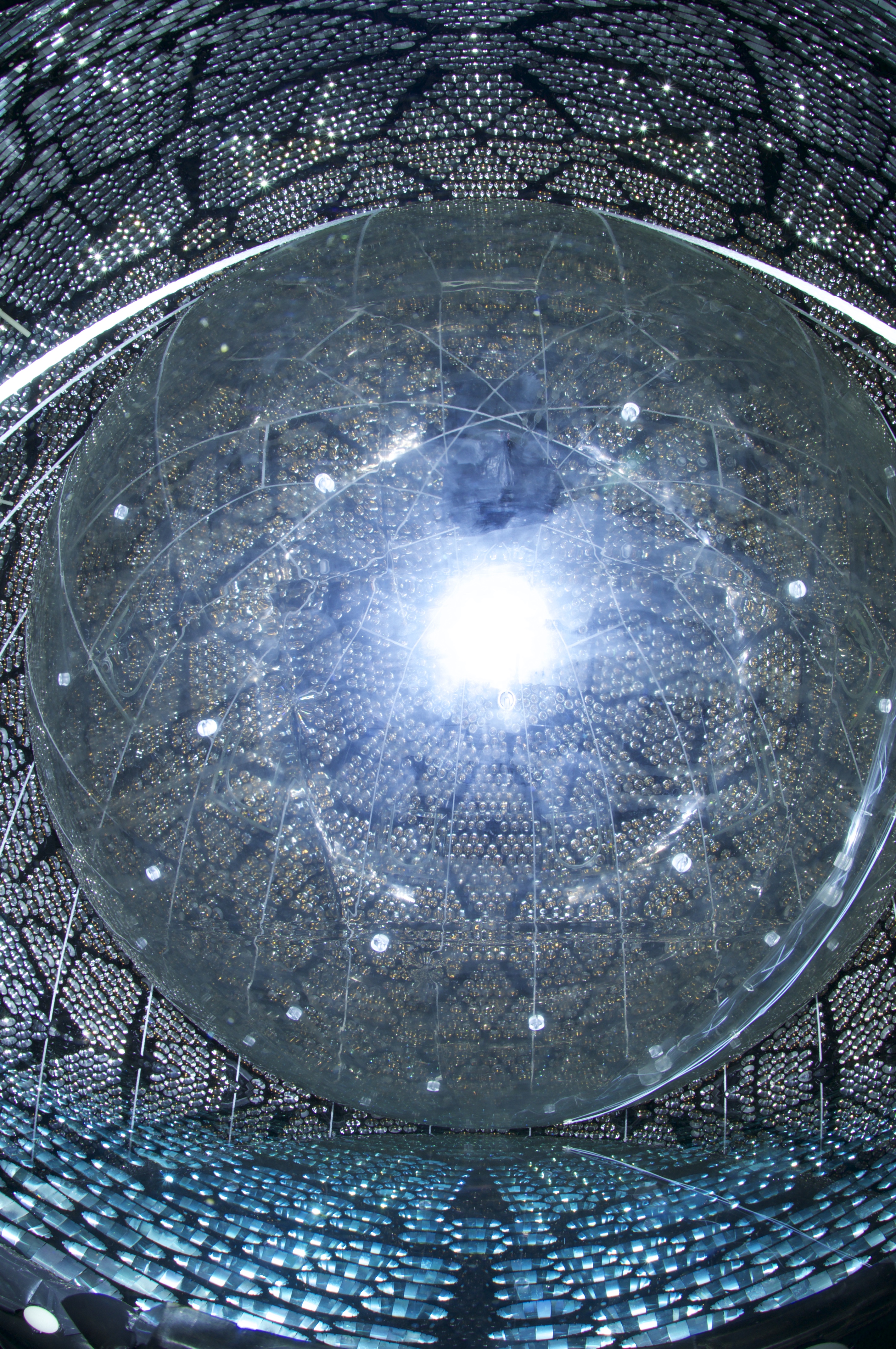Crucial work by Oxford University physicists on the neutrino has been recognised with a share of the Breakthrough Prize in Fundamental Physics for their roles in the Sudbury Neutrino Observatory (SNO) and T2K experiments.
Oxford was the only UK institution involved in the SNO project, based in Canada, which also won a share of the Nobel Prize in Physics last month for the ground-breaking discovery of neutrino oscillation.
Professor Steve Biller, Professor of Experimental Particle Physics at Oxford University, UK Co-Spokesperson for SNO, and UK Spokesperson for the SNO+ experiment, said: 'It's been fantastic to have received this recognition. The experiment wasn't easy, and sometimes the line between a complete disaster and winning both a Nobel and Breakthrough Prize can be pretty thin – it took an exceptional team of people to pull this off.
'The discovery of neutrino oscillations changed the landscape of particle physics, leading to numerous other experimental neutrino efforts and the establishment of new university groups all aiming to learn more about this mysterious phenomenon.'
Professor Dave Wark, Professor in Experimental Particle Physics at Oxford University, former UK Co-Spokesperson for SNO, and Director of Particle Physics at the Science and Technology Facilities Council's (STFC) Rutherford Appleton Laboratory, said: 'You wait a decade for a prize and then two come along at once. It is great to see our experiments recognised for the contributions they have made to our understanding of fundamental physics. What is even more fun is trying to guess what the next generation of neutrino experiments will find – what you don't know is always more fascinating than what you do know.'
Professor Nick Jelley, Emeritus Professor in the Department of Physics at Oxford University and UK Co-Spokesperson and Group Leader for SNO, added: 'Our small group here played leading roles in practically every aspect of the project – both the construction and data analysis – including members of the Oxford mechanical workshop, who played a key role in constructing the acrylic vessel central to the SNO experiment.'
Neutrinos are among the most fundamental and enigmatic particles in nature. They are produced in basic nuclear reactions, such as those that power the Sun, from which there are about a hundred billion neutrinos passing through an area the size of a thumbnail every second. Neutrinos interact with matter extremely weakly, which means they easily pass through the Earth, making them very difficult to detect. Yet, despite their ethereal nature, we know they are crucial to the very fabric of the universe. It has even been proposed that the peculiar properties of neutrinos may hold the key to understanding how matter survived the traumatic birth of the universe to make our existence possible.
There are three distinct varieties, or 'flavours', of neutrino, named after the types of particle they can produce when interacting: electron neutrino, muon neutrino and tau neutrino. Strangely, it has been found that these neutrinos exist as mixtures of mass states, not possessing a single well-defined value. An odd consequence of this is that one flavour can transform, or 'oscillate', into other flavours as it travels. These properties place neutrinos beyond the framework of the standard model of particle physics, meaning they require modifications to existing theory.
Following on from the discoveries of SNO, a number of UK universities, including Oxford, helped create the T2K project (based in Japan) to investigate other parameters of neutrino oscillation. With three different types of neutrinos, it is possible for three different oscillation mixings to take place, and T2K was one of two key experiments honoured with the Breakthrough Prize for the discovery of the last of these mixings.
Professor Dave Wark, who started the T2K project in the UK and has led the UK group since its beginning, said: 'It is very satisfying to see our hard work on T2K recognised, but our observations are just the start, really. These observations open the doors to a whole new set of tools to probe the universe at the smallest scales. We are already building new experiments to use them.'
The great success of SNO has led to the creation of a larger SNOLAB underground facility in Canada, which is now home to numerous other experiments. The SNO detector itself has been upgraded and repurposed to become the SNO+ project. Similarly, the success of T2K now opens the way to further experiments, such as Hyper Kamiokande in Japan and DUNE in the US. In all cases, the UK continues to play a leading role in one of the most exciting areas of scientific research.
The UK's Science and Technology Facilities Council (STFC) (and its predecessor funding agencies) funded the UK side of the neutrino research at the SNO and T2K experiments. Scientists at the STFC's Rutherford Appleton and Daresbury Laboratories were also heavily involved in collaborating with UK university scientists on designing, building and operating key parts of the T2K detectors.
Other recipients of the 2015 Breakthrough Prize, in addition to SNO and T2K, include the K2K, KamLAND, Daya Bay and Super Kamiokande experiments for their studies of neutrino oscillation. These collaborations will share the $3 million prize money, which was awarded at 6pm Pacific Time on Sunday at a ceremony at the NASA Ames Research Centre in Moffett Field, California. Founded by Russian entrepreneur, venture capitalist and physicist Yuri Milner, the Breakthrough Prize in Fundamental Physics recognises individuals who have made profound contributions to human knowledge. The prize is one of three awarded by the Breakthrough Foundation for 'outstanding contributions in Life Sciences, Fundamental Physics, and Mathematics'.
